- Joined
- Oct 9, 2007
- Messages
- 47,324 (7.51/day)
- Location
- Hyderabad, India
| System Name | RBMK-1000 |
|---|---|
| Processor | AMD Ryzen 7 5700G |
| Motherboard | ASUS ROG Strix B450-E Gaming |
| Cooling | DeepCool Gammax L240 V2 |
| Memory | 2x 8GB G.Skill Sniper X |
| Video Card(s) | Palit GeForce RTX 2080 SUPER GameRock |
| Storage | Western Digital Black NVMe 512GB |
| Display(s) | BenQ 1440p 60 Hz 27-inch |
| Case | Corsair Carbide 100R |
| Audio Device(s) | ASUS SupremeFX S1220A |
| Power Supply | Cooler Master MWE Gold 650W |
| Mouse | ASUS ROG Strix Impact |
| Keyboard | Gamdias Hermes E2 |
| Software | Windows 11 Pro |
Intel today announced its 10th generation Core "Comet Lake-H" mobile processor family with a promise of bringing premium desktop-level performance to conventional notebook form-factors, including some bordering the thin-and-light form-factors (under 2 cm thickness). The higher-end of the lineup is geared not just toward serious gaming and creative work, but also toward PC enthusiasts wanting to overclock the processors. For gamers, Intel is guiding its notebook partners to come up with new designs with high refresh-rate and DisplayHDR 1000 displays. The company is also providing OEMs with engineering support to better design their cooling solutions for these processors.
Compared to 9th generation "Coffee Lake-H" processors, the strategy with "Comet Lake-H" appears to be increasing clock-speeds at given price-points, along with introduction of Turbo Boost Max 3.0 technology to this segment, over from the company's HEDT processor lineup. Four out six SKUs hit the magic frequency figure of 5.00 GHz. Two of the SKUs even feature CPU overclocking support. The Core i5 family consists of 4-core/8-thread chips. The Core i7 lineup consist of two 6-core/12-thread parts, and one 8-core/16-thread part. The sole Core i9 SKU is an 8-core/16-thread, with the highest clock speeds and unlocked base-clock multiplier. The "Comet Lake-H" processors are built on 14 nm process, and have identical CPU IPC to "Skylake."
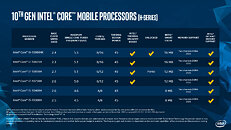
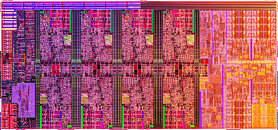
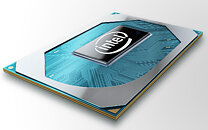
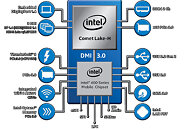
The series begins with the Core i5-10300H and i5-10400H are 4-core/8-thread parts with 8 MB shared L3 caches. The i5-10300H is clocked at 2.50 GHz nominal with 4.50 GHz boost; while the i5-10400H ticks 100 MHz faster. The Core i7 lineup consists of three SKUs, the i7-10750H and i7-10850H being 6-core/12-thread parts with 12 MB L3 caches; and the i7-10875H being 8-core/16-thread with 16 MB L3 cache. The i7-10750H is clocked at 2.60 GHz with 5.00 GHz boost; while the i7-10850H runs at 2.70 GHz with 5.10 GHz boost.
The i7-10850H is "partially unlocked," in that you can manually overclock it by up to four "bins" (base clock multiplier values, i.e., by up to 400-ish MHz). The Core i7-10875H doesn't feature an unlocked multiplier, but is clocked at 2.30 GHz, with up to 5.10 GHz boost. Leading the pack is the Core i9-10980HK, clocked at 2.40 GHz nominal, 5.30 GHz boost, and a fully unlocked multiplier. Besides support for Extreme Tuning Utility (XTU), Intel is introducing a new tool that simplifies overclocking, called Speed Optimizer.
It's interesting to note that unlike previous-gen "Coffee Lake-H" series, "Comet Lake-H" chips only support conventional DDR4 SODIMM memory, with native support for DDR4-2933. LPDDR3 support is dropped, and there's no support for LPDDR4 or LPDDR4x replacing it, either. The processors support up to 128 GB of dual-channel memory. Between "Comet Lake-H" and AMD "Renoir," there are quite a few platform tradeoffs. Renoir supports LPDDR4X up to 4266 MHz dual-channel, PCIe gen 4.0, AMD's equivalent of Smart Sound technology (ability to give voice-commands even when the notebook is standing by), and a more advanced power-management solution. Intel's platform-level advantages are solely in the area of PCIe, with 40 total gen 3.0 lanes, which should enable multiple M.2 NVMe slots, Thunderbolt 3 ports, etc.

On the platform side of things, not a lot has changed. The HM470 chipset is the core logic of choice. Combined with the 16 PCIe gen 3.0 lanes from the processor, the chipset puts out 24 gen 3.0 lanes of its own, totaling 40 on the platform. This enables notebooks to have multiple M.2 NVMe slots, more than one Thunderbolt 3 port, and other bandwidth-hungry onboard devices. Intel is standardizing 802.11ax Wi-Fi 6 (gig+) support using the company's new AX201 WLAN card. Some notebooks could even feature 2.5 GbE wired networking.
The complete slide-deck follows.
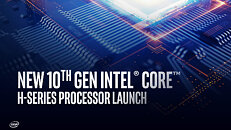

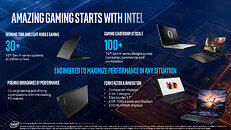

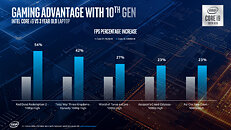







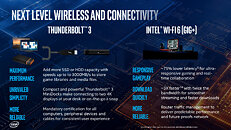



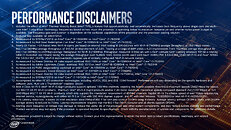
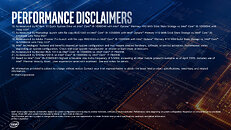
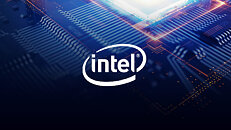
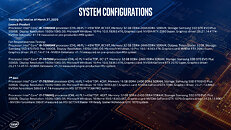

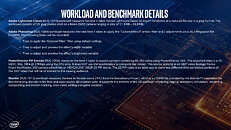
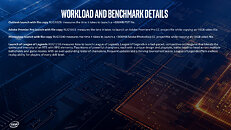
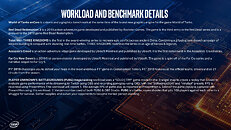

View at TechPowerUp Main Site
Compared to 9th generation "Coffee Lake-H" processors, the strategy with "Comet Lake-H" appears to be increasing clock-speeds at given price-points, along with introduction of Turbo Boost Max 3.0 technology to this segment, over from the company's HEDT processor lineup. Four out six SKUs hit the magic frequency figure of 5.00 GHz. Two of the SKUs even feature CPU overclocking support. The Core i5 family consists of 4-core/8-thread chips. The Core i7 lineup consist of two 6-core/12-thread parts, and one 8-core/16-thread part. The sole Core i9 SKU is an 8-core/16-thread, with the highest clock speeds and unlocked base-clock multiplier. The "Comet Lake-H" processors are built on 14 nm process, and have identical CPU IPC to "Skylake."




The series begins with the Core i5-10300H and i5-10400H are 4-core/8-thread parts with 8 MB shared L3 caches. The i5-10300H is clocked at 2.50 GHz nominal with 4.50 GHz boost; while the i5-10400H ticks 100 MHz faster. The Core i7 lineup consists of three SKUs, the i7-10750H and i7-10850H being 6-core/12-thread parts with 12 MB L3 caches; and the i7-10875H being 8-core/16-thread with 16 MB L3 cache. The i7-10750H is clocked at 2.60 GHz with 5.00 GHz boost; while the i7-10850H runs at 2.70 GHz with 5.10 GHz boost.
The i7-10850H is "partially unlocked," in that you can manually overclock it by up to four "bins" (base clock multiplier values, i.e., by up to 400-ish MHz). The Core i7-10875H doesn't feature an unlocked multiplier, but is clocked at 2.30 GHz, with up to 5.10 GHz boost. Leading the pack is the Core i9-10980HK, clocked at 2.40 GHz nominal, 5.30 GHz boost, and a fully unlocked multiplier. Besides support for Extreme Tuning Utility (XTU), Intel is introducing a new tool that simplifies overclocking, called Speed Optimizer.
It's interesting to note that unlike previous-gen "Coffee Lake-H" series, "Comet Lake-H" chips only support conventional DDR4 SODIMM memory, with native support for DDR4-2933. LPDDR3 support is dropped, and there's no support for LPDDR4 or LPDDR4x replacing it, either. The processors support up to 128 GB of dual-channel memory. Between "Comet Lake-H" and AMD "Renoir," there are quite a few platform tradeoffs. Renoir supports LPDDR4X up to 4266 MHz dual-channel, PCIe gen 4.0, AMD's equivalent of Smart Sound technology (ability to give voice-commands even when the notebook is standing by), and a more advanced power-management solution. Intel's platform-level advantages are solely in the area of PCIe, with 40 total gen 3.0 lanes, which should enable multiple M.2 NVMe slots, Thunderbolt 3 ports, etc.

On the platform side of things, not a lot has changed. The HM470 chipset is the core logic of choice. Combined with the 16 PCIe gen 3.0 lanes from the processor, the chipset puts out 24 gen 3.0 lanes of its own, totaling 40 on the platform. This enables notebooks to have multiple M.2 NVMe slots, more than one Thunderbolt 3 port, and other bandwidth-hungry onboard devices. Intel is standardizing 802.11ax Wi-Fi 6 (gig+) support using the company's new AX201 WLAN card. Some notebooks could even feature 2.5 GbE wired networking.
The complete slide-deck follows.

























View at TechPowerUp Main Site









